The view from the top of Mt. Misen, where many boulders and oddly-shaped stones are arrayed and visitors can look a long way over the many islands in the Seto Inland Sea.
A shoal that curves like a bow. Floating in it are a shrine and its large, bright red torii gate. To the rear are a deep green forest and a mountain covered in rocks and boulders. This scenery is intertwined with the stories of Kukai and Heike. Miyajima is like a work of art created by nature and the power of people’s prayers.
Photos by Naoya Furuta
A Sacred Natural Site Which Has Been Gathering Believers Since Long Ago
Miyajima, also known as Aki No Miyajima, one of the Nihon Sankei (a term referring to the three most scenic places in the country) is a small island floating in the Seto Inland Sea, at a point about twenty kilometers from downtown Hiroshima. At 30km in circumference, it isn’t very large, but rugged mountains such as Mt. Misen, over 500 meters tall, tower over it, creating a rich diversity of landforms on the island.
Due to its natural environment, the entirety of Miyajima has been the subject of worship since long ago. It is said that the construction of the Itsukushima Shrine was begun in 593 CE, during the Asuka Period, in order to sanctify the entire island as an object of worship.
When the Heian Period (794-1185 CE) began, the shrine received the support of Taira no Kiyomori, the director of what was then the province of Aki (in modern-day Hiroshima Prefecture), and various structures were built one after the other, including a stage and the main shrine building, done in the shinden-zukuri style that was commonly used for palaces of the time and connected by walkways over the sea. Additionally, Itsukushima Shrine would become the guardian shrine of the Heike clan, and it came to prosperity along with that family’s rise. Later on, after the destruction of the Heike clan and the loss of several shrine buildings due to fire, Itsukushima Shrine was abandoned. However, 16th-century lord Motonari Mori decided to restore the area, so the shrine buildings were fixed up once again. Additionally, Toyotomi Hideyoshi had a large sutra library, over 1400 square meters in area, constructed there, and during the Edo Period (1603-1186 CE), Itsukushima Shrine began to flourish once more from the large number of ordinary citizens who made pilgrimages there.
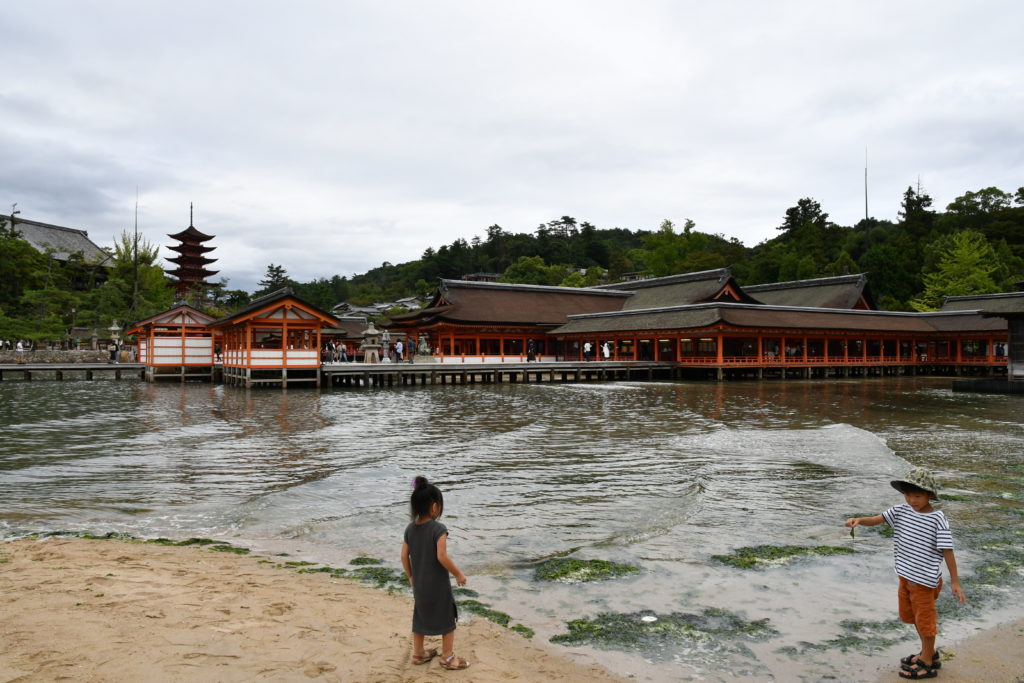
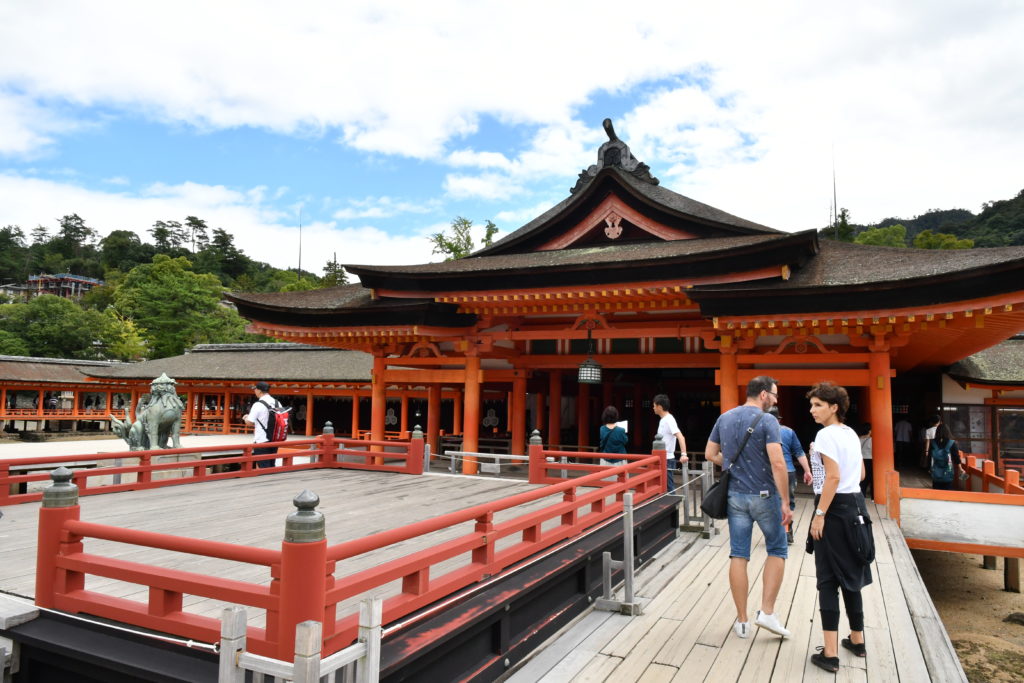
Rare Construction That Fuses with Nature
One thing for which Itsukushima Shrine is known is its large torii shrine gate, located 200 meters offshore from the bow-shaped shoal where the grounds and main buildings of the shrine stand. When the tide goes out, it is possible to walk up to the torii, but the shrine builds, walkways, and torii all seem to float on the water at high tide.
And behind the buildings and the beach sit Mt. Misen and its virgin forest, which are protected as the location where a god descended to earth. The unique cultural landscape formed by the sea, the buildings, and the natural environment of the mountain all together is one reason why Itsukushima Shrine was certified as a World Heritage asset.
Because the shrine buildings were built on the sea, in a place where they are affected by the movement of the tide, they cannot avoid being damaged by hurricanes and tidal surges. For this reason, there are mechanisms in the structures which are intended to allow them to weather disasters, such as the fact that there are gaps between the pieces of wood that make up surfaces such as the stage and the passageways between buildings.
The large torii gate, a symbol of Itsukushima Shrine which towers over the water as though it is floating, is 16.6 meters tall, meaning that it boasts a size roughly equal to that of the Great Buddha of Nara. Its pillars are made from camphor trees that are over 500 years old, and their bases rest on top of pinewood pilings. It is kept in balance by its own weight.
The current torii is the structure’s eighth incarnation. In the more than 140 years since it was constructed in 1875, it has sustained some severe damage, and so a large-scale restoration project began on it in June 2019. The complex’s universal value is known and recognized around the world, and Itsukushima Shrine was registered as a World Cultural Heritage asset by the Unesco World Heritage Committee in 1996.
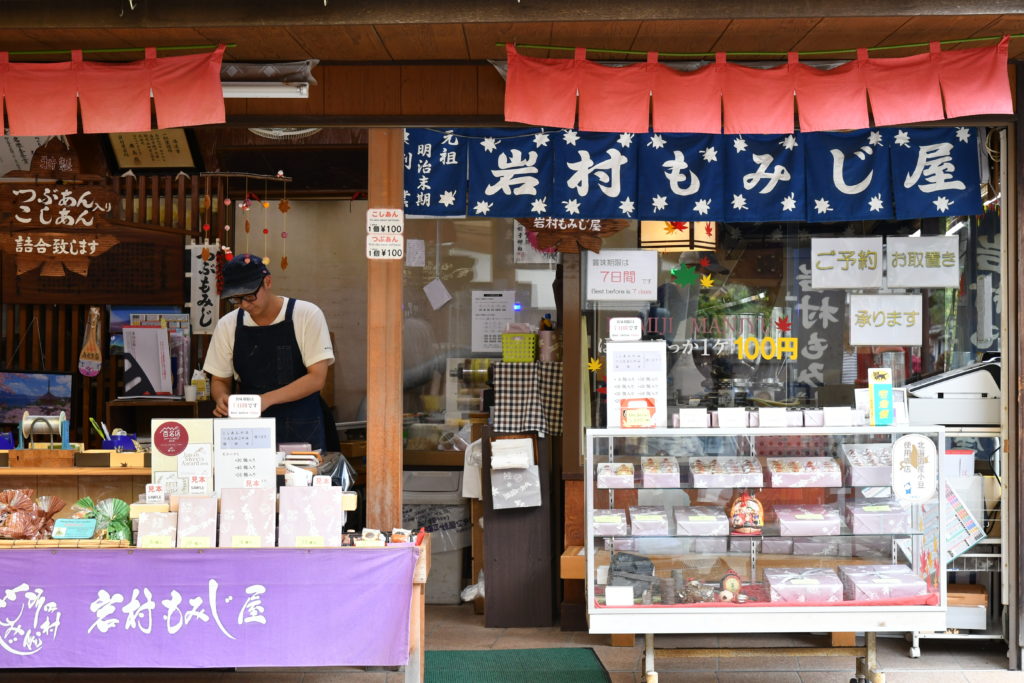
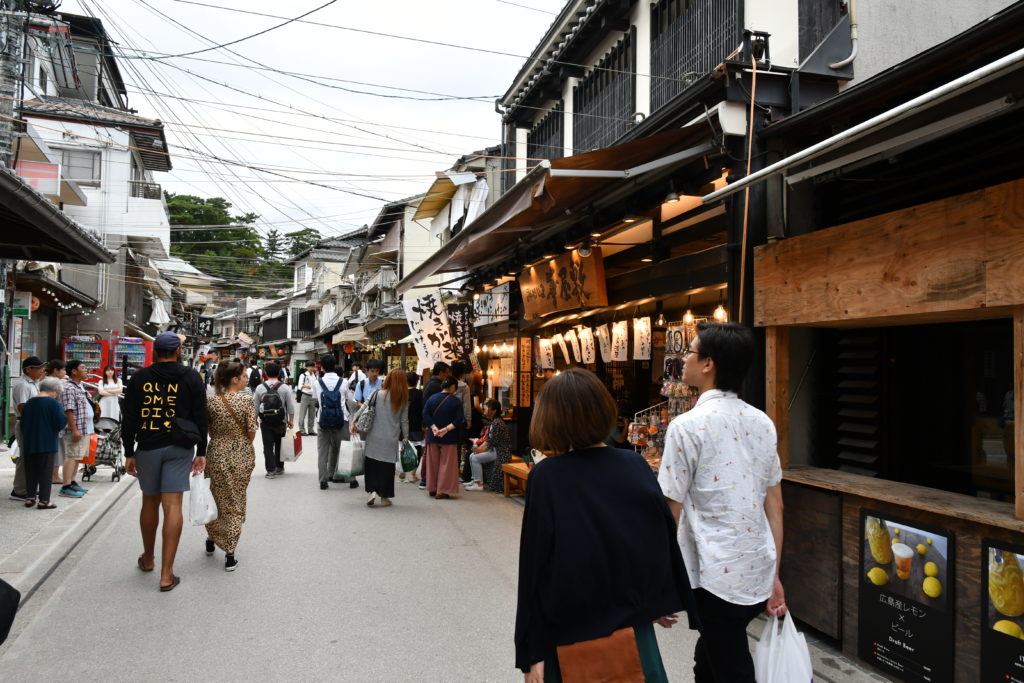
A Pristine Natural Environment Protected by The Gods
The buildings are not the only part of Itsukushima Shrine that are inscribed as a World Heritage asset; that designation also includes the entirety of the forests behind them. The forest area that is included in the Heritage Region is roughly 430 hectares, making up about 14% of the island’s total area.
These forests include the primeval forest on Mt. Misen, which is recognized as a National Natural Monument. Because the entirety of Miyajima has been the subject of worship since long ago, its pristine natural environment remains in place. Until the Kamakura Period (1185 – 1333 CE), the entirety of Miyajima was treated as forbidden ground; monks and others were first allowed to live on it starting at the end of the Kamakura Period and during the Nanboku-cho Period (1333 – 1392 CE).
For this reason, an abundance of flora can be seen on Miyajima that cannot be seen on nearby islands, such as clusters of wheel trees, natural groves of fir and hemlocks, and groves of Japanese umbrella pines.
The floral diversity of Miyajima is such that there was an episode in which globally prominent botanist Dr. Adolf Engler (a professor at the University of Berlin and the director of the Berlin-Dahlem botanical garden), who visited Miyajima in 1913, saw its wheel trees and matsubusa vines (Schisandra nigra), which at the time were considered vital to understanding plant evolution, prompting him to say, “This is where I want to live my life, and this is where I want to die.” With Dr. Engler’s recommendation, in 1929, the north slope of Mt. Misen was designated a Natural Monument as a representative example of Japan’s warm temperate forests.
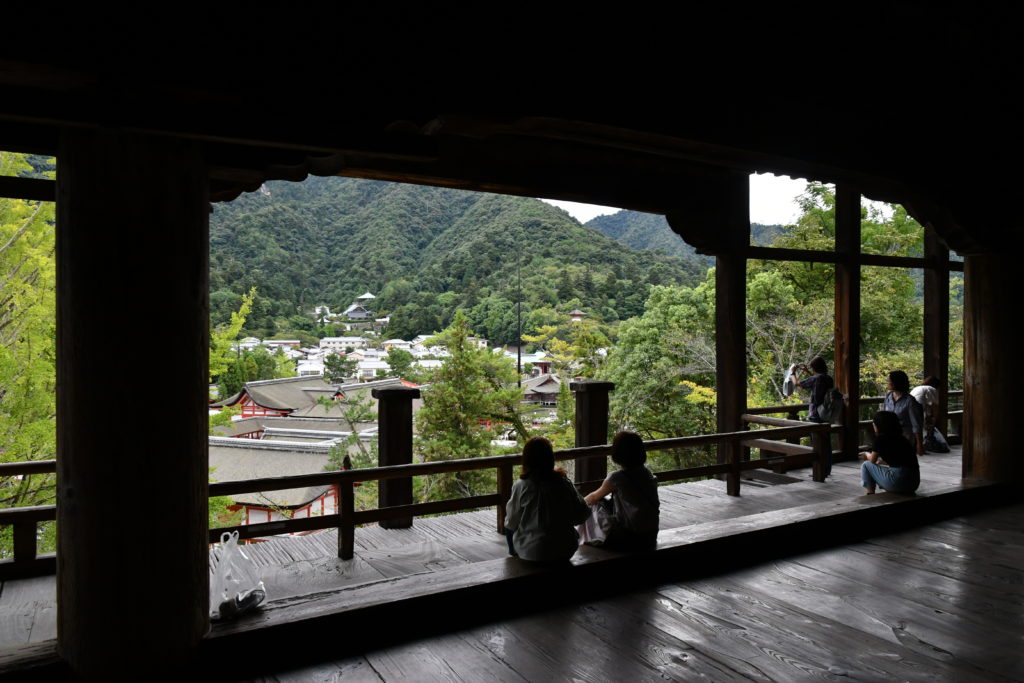
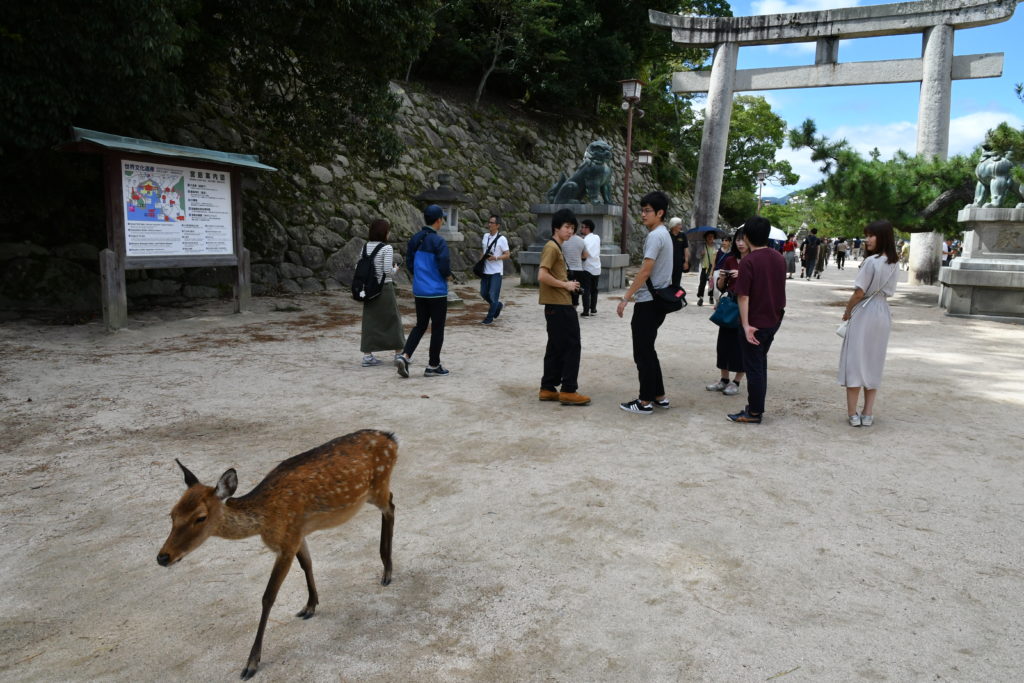
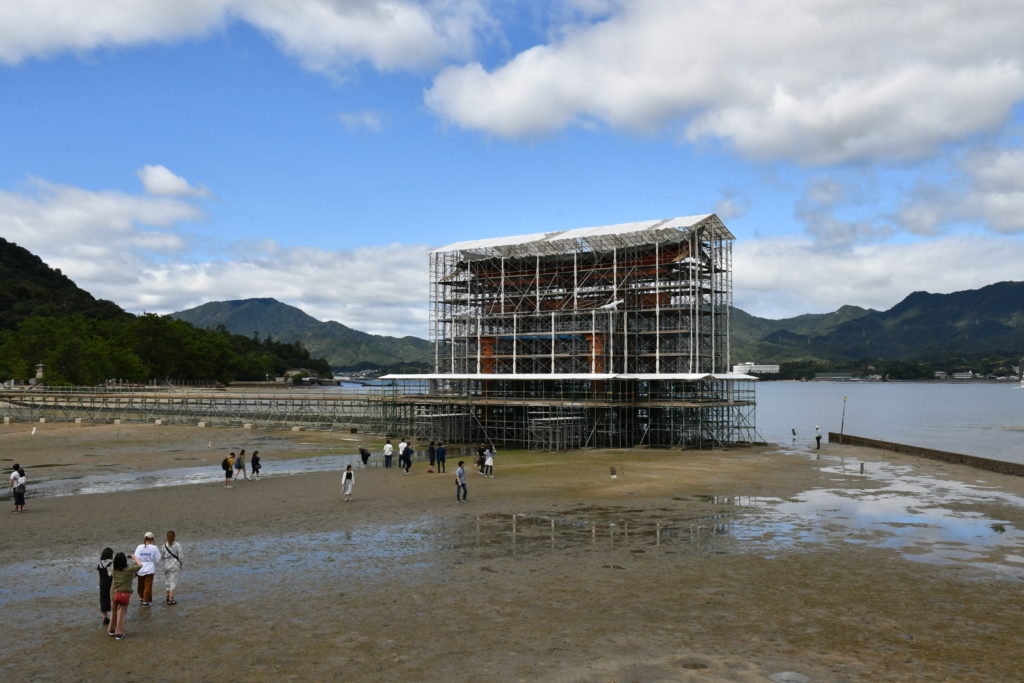
Mt. Mise: A Sacred Mountain with A Temple Opened by Kukai
Standing protectively over these pristine forests is Miyajima’s highest peak, the 535-meter Mt. Misen. Although its total elevation is not exceptionally high, it is a steep slope, rising up from sea level, so the paths ascending it are rugged, and every year some people slip down it or have accidents on it. However, thanks to the Miyajima Ropeway, established in 1959, one can easily reach the Shishi-Iwa, or Lion Rock, at an elevation of 400 meters, within ten minutes. From there, if one has an hour to spare, one can go up to the summit and return.
It is said that a temple was opened on Mt. Misen by the monk Kobo Daishi, also called Kukai, in 806 CE. Kukai, who crossed the sea to visit China, mastered the esoteric secrets of Shingon Buddhism and brought them back to Japan, visited this area the following year. While he was here, he performed the ritual of goma, burning sticks to ask for a god’s blessing, as well as taking 1,000 days to master a secret process for performing the rite of gumonji, reciting a certain mantra one million times. Near the top of Mt. Misen, there remain numerous historic spots, boulders, and unusual stones which tell of this legend.
For example, there is the “Undying Flame,” said to be one of Miyajima’s “Seven Mysteries.” For over 1200 years, ever since Kukai mastered his technique for performing gumonji, a flame has burned continuously, protected from going out, in the Reikado building near the summit of Mt. Misen. This sacred flame was the source of the fire in the pilot light of the smelting furnace at the Yahata Steel Works as well as for the Flame of Peace in Hiroshima Peace Memorial Park.
Additionally, there are several buildings connected to Shinto-Buddhist syncretic religion near the summit of Mt. Misen, including Misen Hondo (Mt. Misen Main Hall, built on the spot where Kukai is said to have mastered his gumonji technique), as well as Sankido (the only hall in Japan consecrated to demon gods), Kanondo, Munjudo, Dainichido, and Miyama Shrine.
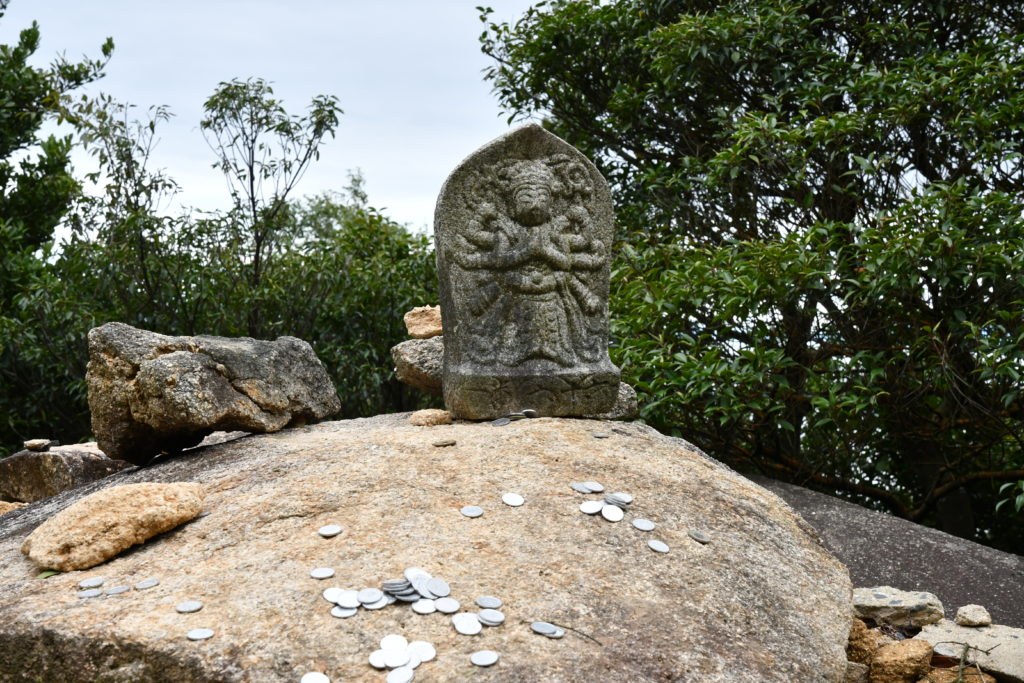
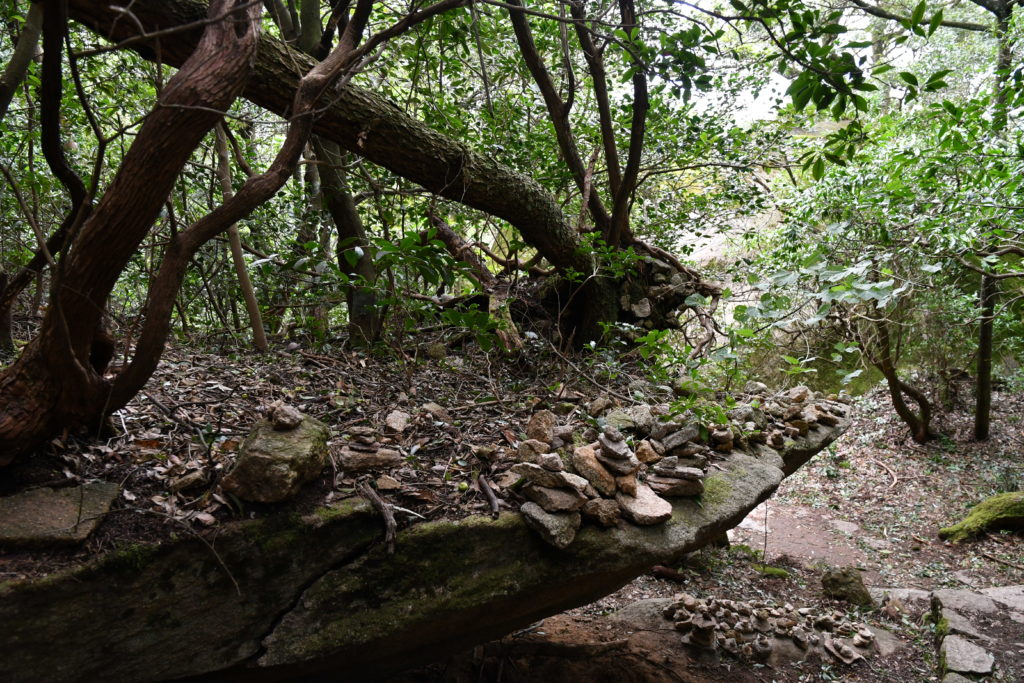
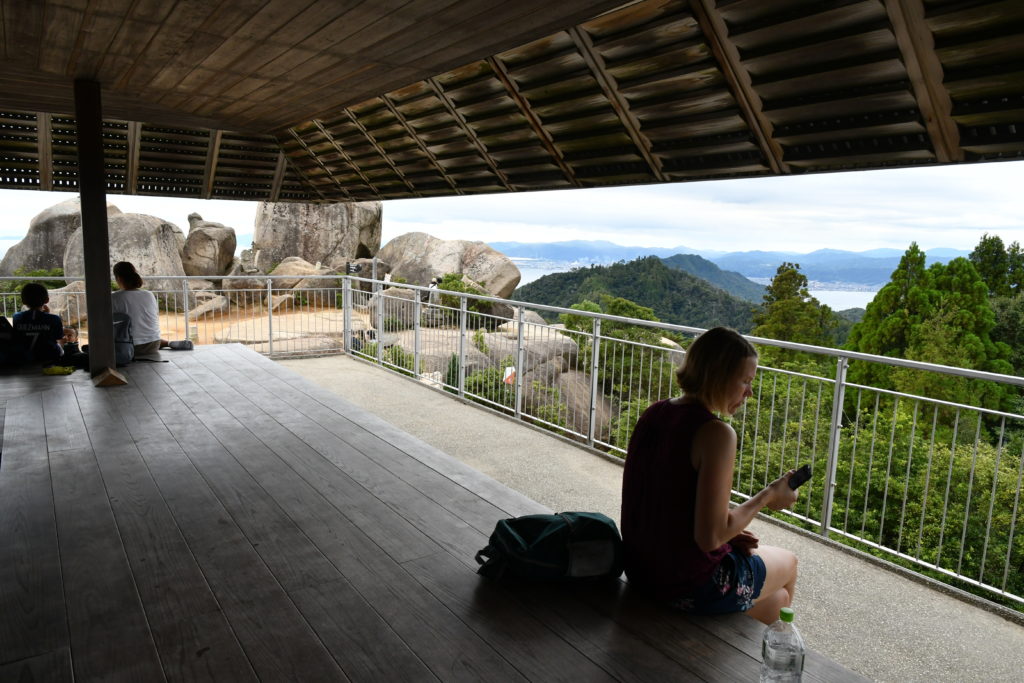
The View from The Top of Mt. Misen Was Praised by Hirobumi Ito
In addition to these buildings, many boulders and unusual stones greet one’s eye when one reaches the summit of Mt. Misen.
If one leaves Shishiiwa Ropeway Station, passing Misen Hondo and Reikado to reach a point almost at the mountain’s summit, one will come to a boulder with a tunnel through it, known as Kuguri-Iwa (“Pass-through Rock”). In addition to this, there are, among many others, a large stone called Fudo-Iwa (“Unmoving Rock”); a rock several dozen square meters in area, into which scriptures and Sanskrit characters are carved, called Mandara-Iwa (“Mandala Rock”); Kanman-Iwa (“Tidal Rock”), which has a hole in its side 10 centimeters in diameter, in which water that has collected is said to rise and fall with the tide; and Fune-Iwa (“Boat Rock”), a boulder shaped like a boat. From the observation platform on the summit renovated in 2013, one can look down on these rocks and boulders, or look out further, enjoying a gorgeous 360-degree panoramic view of the Seto Inland Sea and the islands of various sizes that float in it. Once, when Prime Minister Hirobumi Ito visited the area, he praised the view that greeted him from the top of Mt. Misen, saying, “The true value of one of the Nihon Sankei lies in the view from that summit.”
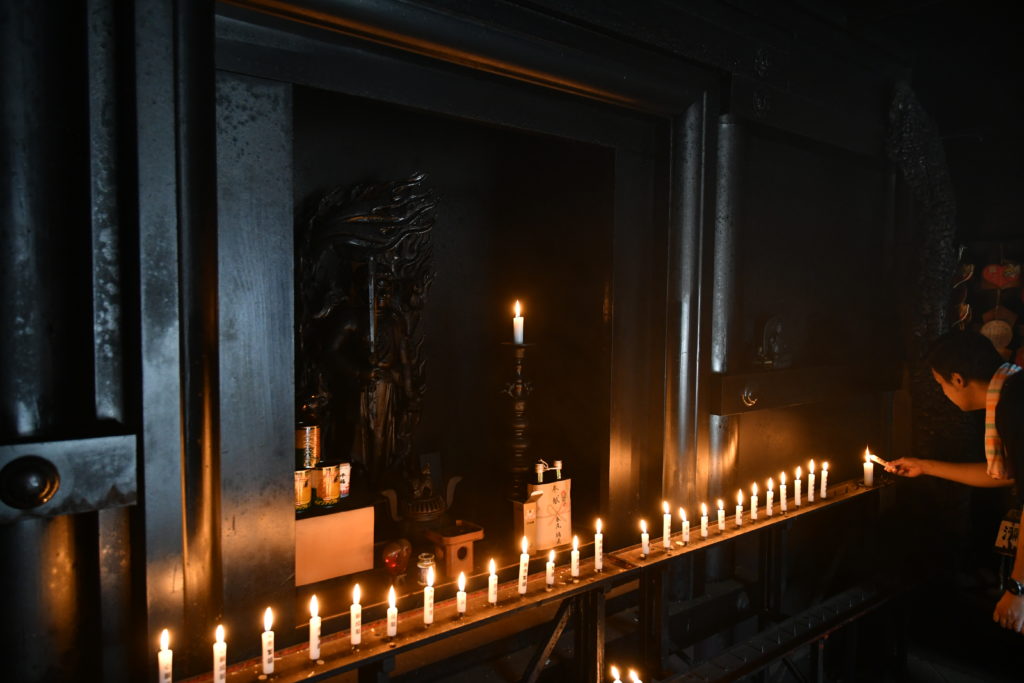
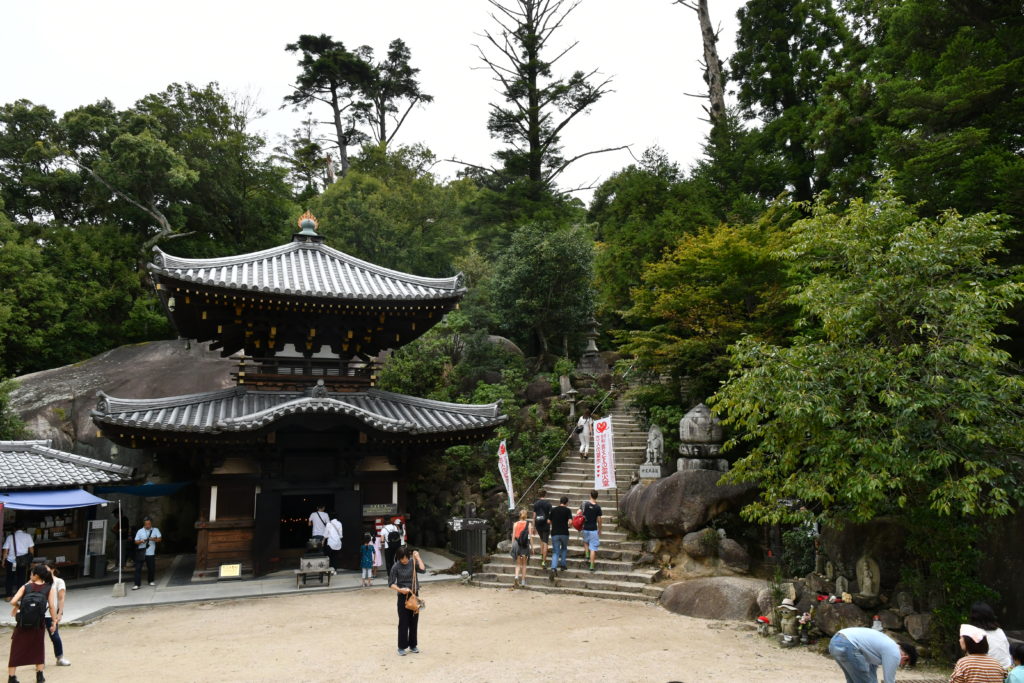
A Unique Work of Art Woven by Nature and Religion
It could be said that, based on the worship of Mt. Misen, Miyajima, including Itsukushima Shrine, is a totally unique work of art created by the interactions of humans and nature over a long period.
This mutual relationship, interweaving nature and religion, has attracted attention even from other countries in recent years. Natural locations which are protected as the result of being objects of worship are referred to as Sacred Natural Sites.
Miyajima could surely be described as a prototypical example of a Sacred Natural Site. In recognition of its value, it has been inscribed as a World Heritage asset.
The people of the world have begun to recognize the value of the mutual relationship between religion and nature preservation. Isn’t it vital for those of us living in the present day to be more aware of the importance of this relationship which our ancestors valued and put into practice?
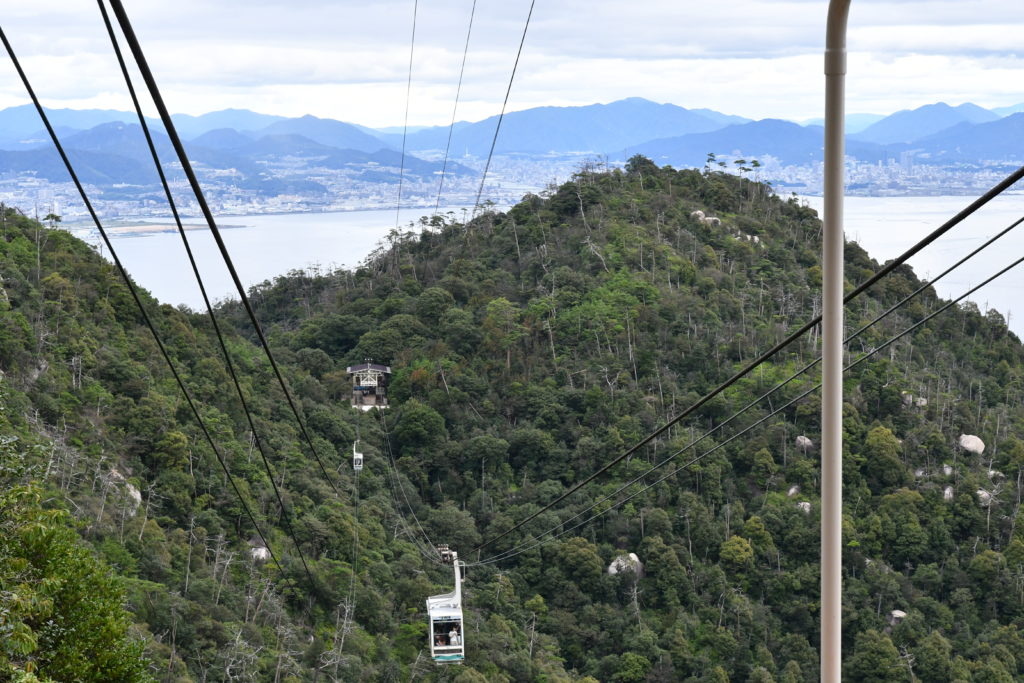
Translated from the original article: Naoya Furuta (2020) Miyajima: Visit A Sacred Mountain Protected by The Gods, Chiikijin vol.56, pp. 62-67

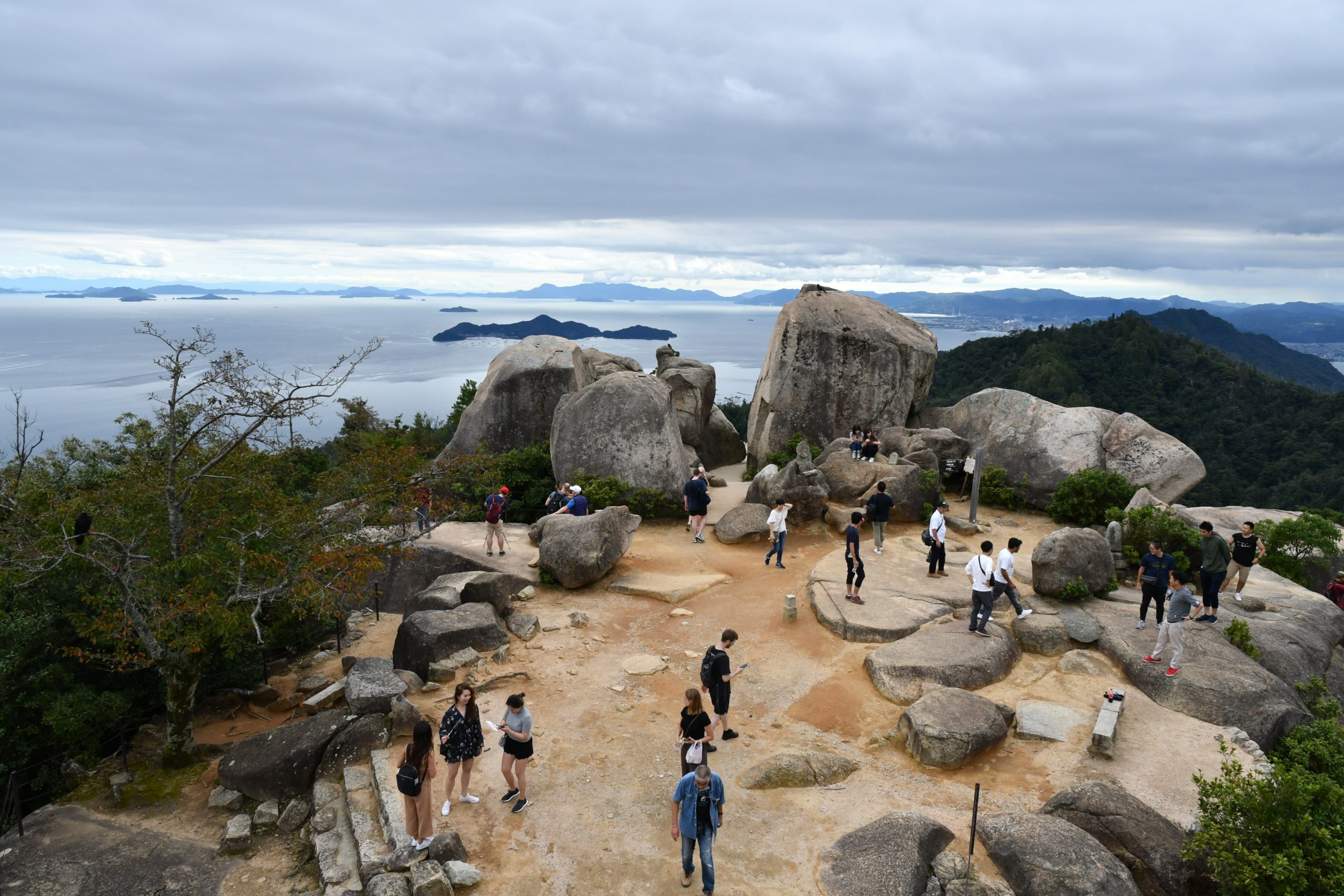

コメント